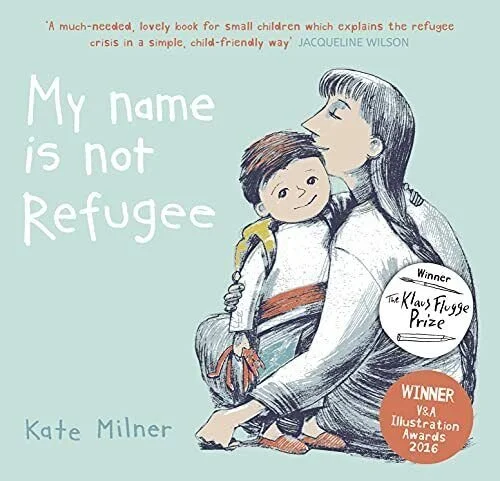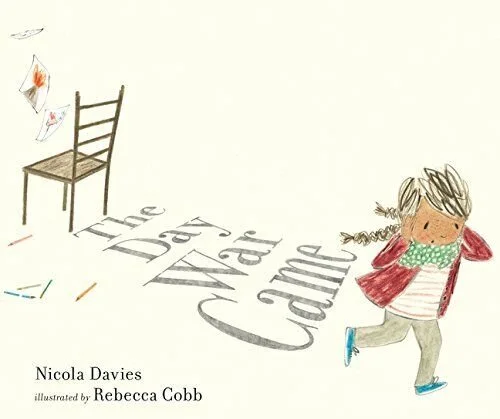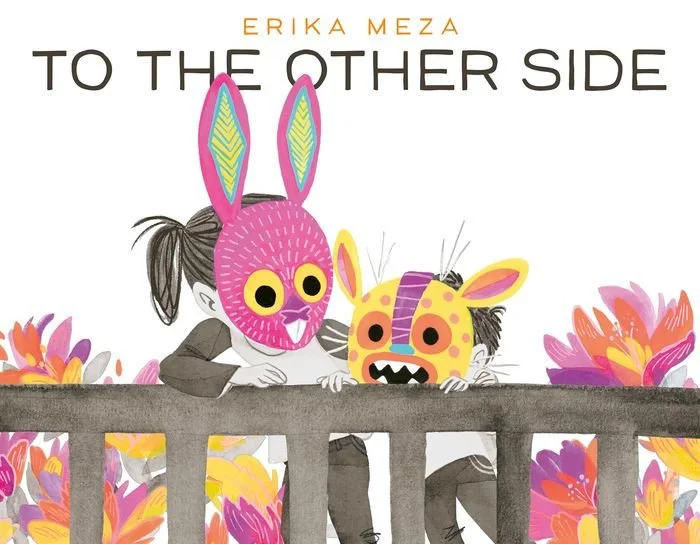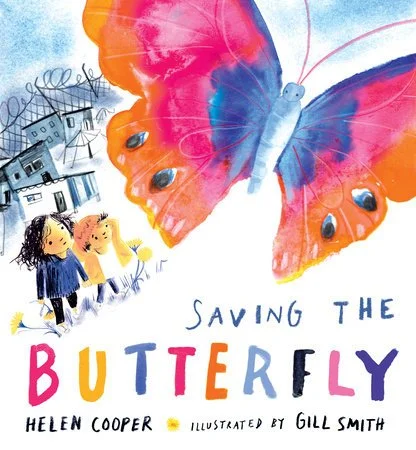WAR, MIGRATION, DISPLACEMENT
LUBNA AND PEBBLE (Wendy Meddour and Daniel Egneus)
‘Lubna and Pebble’ (Oxford University Press, 2019) is a beautiful and powerful story about two children and a pebble that have fled their home, who find friendship ‘in a world of tents.’
Lubna finds the pebble on the beach when they arrive in the night, and she falls asleep in Daddy's salty arms. Pebble always listens to her stories and smiles when Lubna feels afraid. But when a lost little boy arrives, Lubna understands that he needs Pebble even more than she does.
This is a beautifully illustrated story, evoking all the emotions of this unknown and uncertain world. The writing is full of gentle but powerful emotive language. Overall, it's a very moving story of kindness, hope and friendship despite challenging times.
MY NAME IS NOT REFUGEE (Kate Milner)
A touching, timely and tender exploration of refuge and migration for the youngest readers, this picture book offers a moving insight into the real journeys being made by children today. Winner of the Klaus Flugge Prize 2018.
Told from the point of view of a child and their parent who have to leave their home, My Name is Not Refugee (Barrington Stoke, 2017) foretells to a child what life will be like as a refugee. The situations, such as waiting, walking, queuing and eating strange foods are poignant and emotive. The parent, who narrates the book, suggests it’ll be hard but interesting too. Ultimately, the parent reassures the child that whilst they’ll be called ‘refugee’ that isn’t their name.
The story would benefit children who have been forced to flee their homes, but also all readers to develop empathy towards displaced families. Little questions posed in the illustrations help readers relate to the characters and their situation: What would you take? How far could you walk? Can you speak more than one language?
BEEGU (Alexis Deacon)
Beegu (Red Fox, 2004) is the story of a little space alien who has landed on Earth and has lost her family. She tries to make friends with the strange people she meets with limited success. No one understands her. No one wants her.
When Beegu is finally rescued by her mother, she tells her all about her difficult time she's had and about the children that showed her kindness.
The illustrations perfectly capture the feelings of being lost and alone, inspiring empathy and promoting discussion about how it might feel to be an outsider.
ALIS JOURNEY - A JOURNEY FROM AFGHANISTAN (Andy Glynne, Salvador Maldonado)
Ali’s Journey (Wayland, 2014) is a picture book for older children about ten-year-old Ali and his journey from Afghanistan. Ali recalls tents and fighting and bombs and the sadness he felt. He remembers his Grandma deciding they must move to Europe.
Ali is separated from his family and goes to school where he learns knew things. At first he is embarrassed and frustrated but slowly he finds new friends and they are amazed by his drawings. He shares pictures of his family and his favourite things.
This story is hard hitting, not shying away from the pain and hardship of being a refugee without the love and support of your family around you. It's a story to encourage empathy and connection. The story ends with a glimmer of hope for Ali. Four years after his move to Europe, he gets to talk to his parents on the phone. The reader sees Ali wishing that one day his family will be able to join him.
THE LAST GARDEN (Rachel Ip and Anneli Bray)
The Last Garden (Hodder, 2021) is a thoughtful, tender story that reminds us never to give up hope. It follows the main protagonist, Zara, who has the most beautiful garden that the whole community enjoys. But one day everyone has to leave the city. The garden is locked with a key while the people flee their homes. The book was inspired by true events in Syria and war gardens around the world and throughout history. It’s very sad to think of cities and homes being destroyed, but this story gives hope that one day peace and colour may be restored to war torn places, just like it was in Zara’s garden.
THE SUITCASE (Chris Naylor-Ballesteros)
The Suitcase (Nosy Crow, 2020) is a simple but inspiring story to start conversations about migration with young children. With everyone, in fact. A different-looking creature appears with a suitcase and the other animals in the story are uncertain about them. The creature has travelled for a long time and has come a long away. While the creature sleeps, the other animals break open their suitcase to find out more about them.
The economic speech and use of white space add to the poignancy of this story, and to the takeaway that we should treat displaced people with empathy, kindness and respect.
THE DAY THE WAR CAME (Nicola Davies, Rebecca Cobb)
The Day The War Came (Walker 2018), is dedicated to children lost and alone because of war and to those that help them. It is told from the point of view of a child refugee forced to flee the only home they know. Nicola’s lyrical use of language depicts war, powerfully drawing on all the senses to bring the war-torn environment alive to the reader. Rebecca’s light and loose illustrations add to the vulnerability of the main character as they flee the war and reach a place where the significance of an empty chair in a classroom is not taken for granted. A story for children experiencing the unthinkable, and also for those who want to know how to help.
TO THE OTHER SIDE (Erika Meza)
To The Other Side (Hodder, 2023) is a powerful and timely story, exploring the journey of two young refugee children in search of safety. A young child and their sibling have left home to play a game. To win, they must travel across endless lands together and make it to the finish line.
Meza’s use of colour is striking and effective. The yellows, pinks, purples and oranges of the animal masks worn by the children and those who seek the safety of the border, contrast the background greys. Monsters seeking to stop them crossing the border are sharp and jagged.
A beautifully illustrated book and an important read, perfect for opening up conversations about conflict and war, encouraging empathy and understanding.
ME AND MY FEAR (Francesca Sanna)
The main character in Me and My Fear (Flying Eye, 2018) has a secret - a tiny friend called Fear who keeps the girl safe and helps her explore new things. But when the girl moves to a new country, starts a new school and doesn't speak the language, settling in is difficult and the girl's personified Fear stops her doing things like playing and joining in. Fear even stops her from sleeping and the main character feels increasingly sad and lonely.
When a new boy reaches out, Fear shrinks and things improve. When the girl realises he has a secret fear too, their bond is strengthened. Things are still tricky at the new school – it takes time to adjust to big changes - but now the girl knows everyone has a little fear.
This book shows children that fear is important for keeping us away from danger, but also empowers them to manage their worries and mental health. We are all afraid at sometimes.
THE NEW GIRL (Nicola Davies, Cathy Fisher)
The New Girl (Graffeg, 2021) features a new girl and the ways in which she is treated when she arrives at a new school, not all of them kind. She doesn't speak the same language, she eats smelly food, and she looks different. The story is told from the secondary character's point of view, but the illustrations keep us firmly focused on the girl. When beautiful flowers begin to appear all over the classroom, the children try to make their own flower but it isn't easy… until the new girl shows them how and it’s the start of a new friendship.
This beautiful picture book is full of acceptance and understanding. It feels like it is pitched for slightly older children. There is lots to enjoy and unpack. The illustrations are soft and gentle, in keeping with its themes of kindness towards strangers, which remind us that even if you make mistakes when you first meet someone, it's never too late to make things right.
SAVING THE BUTTERFLY (Helen Cooper, Gill Smith)
Saving The Butterfly (Walker, 2022) is a poignant picture book that gives an insight into the experiences and emotional trauma suffered by child refugees. It pulls at the heartstrings as it tells the story of a brother and sister coming to terms with their new life. But a brightly coloured butterfly brings hope and symbolises a new beginning…
A girl and her younger brother are rescued from a boat and brought to shelter. The little boy doesn’t remember much but the sister is haunted by her memories. While her brother makes friends and has fun she hides in their broken house. But one day the boy brings a butterfly home which leads to the beginning of the girl’s healing process.
The absence of parental figures adds to the heartwrenching situation that the children are in. Strangers treat them with kindness and give them shelter but they live on their own with memories of the past and an uncertain future.
Gill Smith’s fabulous illustrations complement Helen Cooper’s lyrical, easy to read text. Splashes of colour on dark backgrounds symbolise emotional states. Throughout the story the boy wears a bright yellow jacket in contrast to the subdued colours of their surroundings. The characters’ facial expressions effectively convey their feelings and emotions and add to the poignancy of the text.
Saving The Butterfly is a wonderful book to introduce children to the situation that young refugees face. It can stimulate discussions about why families may need to leave their homes, how families can become separated and the ways in which we can show kindness and offer support.
(Reviewed by Catherine Friess of Story Snug)
WELCOME (BARROUX)
When Polar Bear and his friends are swept away from their icy home, they hope to find refuge in a new land. But when they are turned away from one place after another, they start to doubt that they will ever find somewhere they will be made welcome.
In this deceptively simple but important picture book, author-illustrator Barroux crafts a powerful story with a surprise ending about hugely important and current issues. Welcome (Egmont 2016) encourages kindness and empathy in the next generation and would be a perfect story to initiate discussion around migrants and refugees. It also touches on global warming and the current climate crisis in a gentle, open-ended way.












